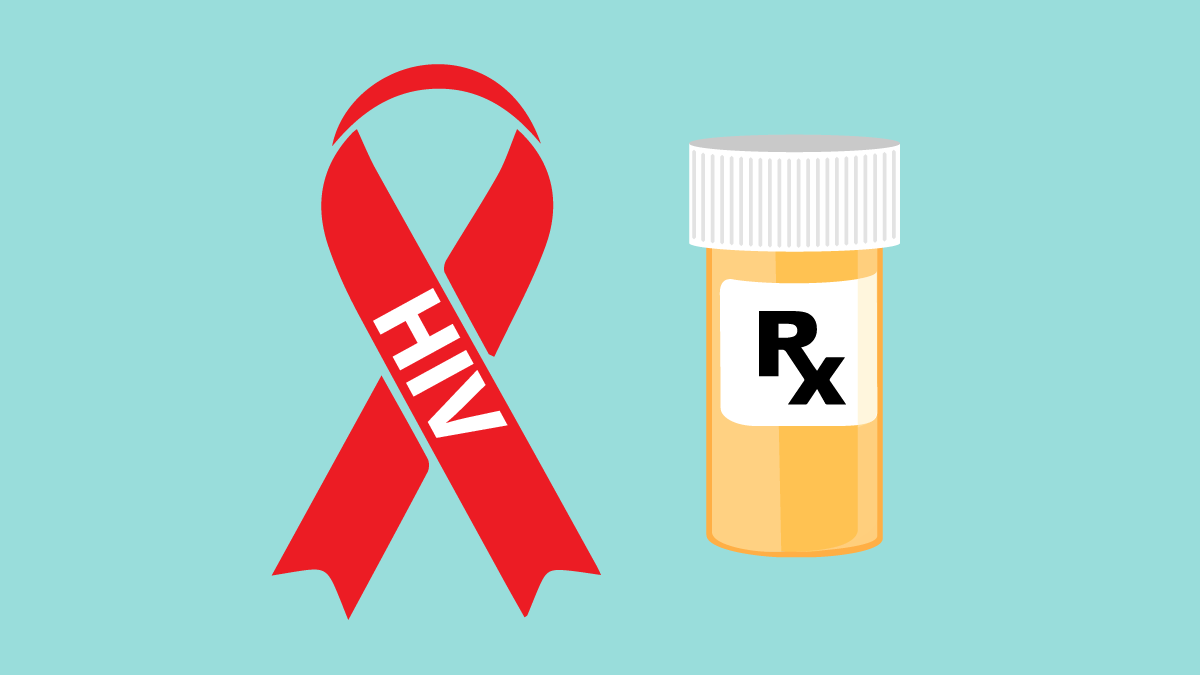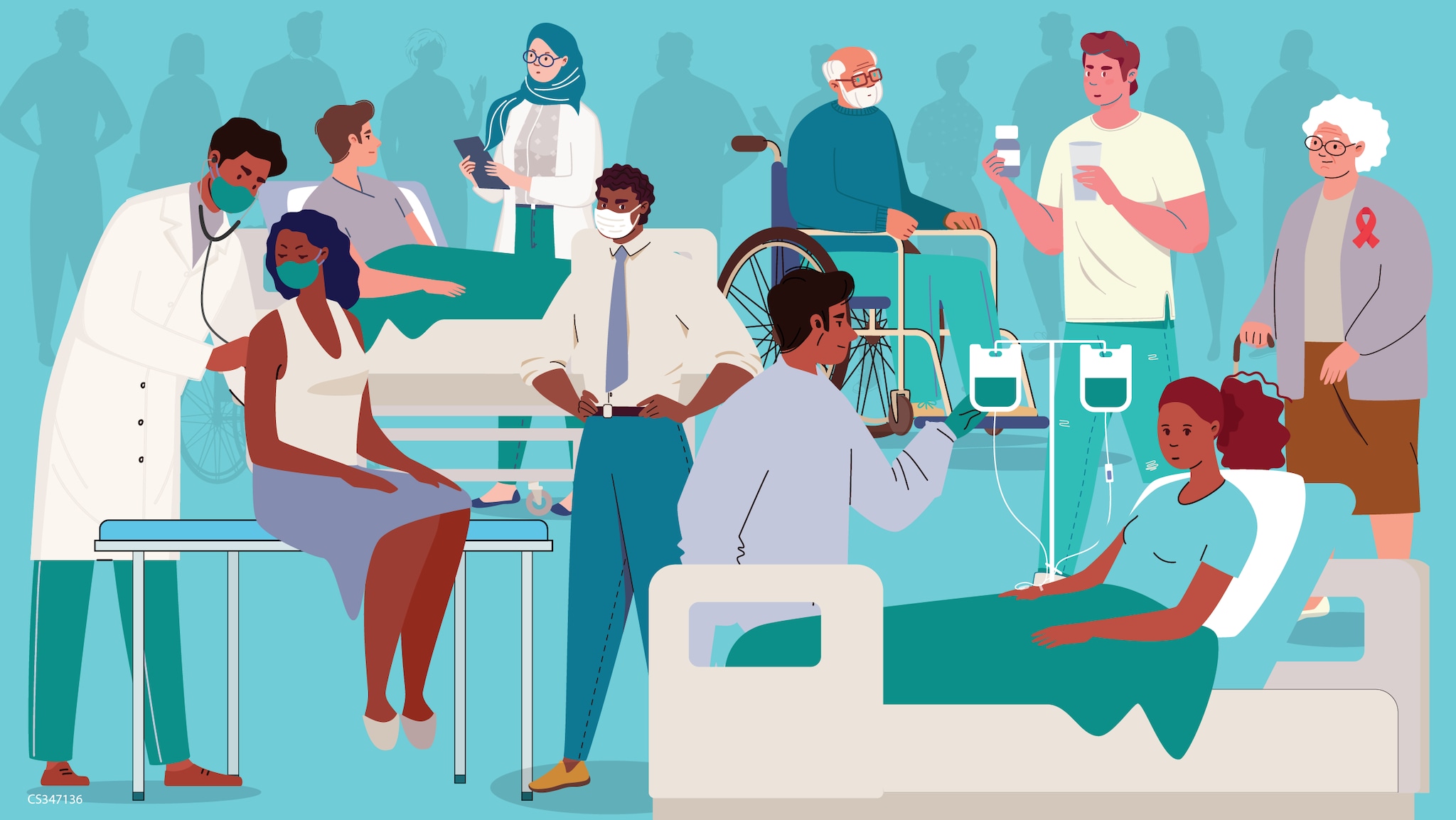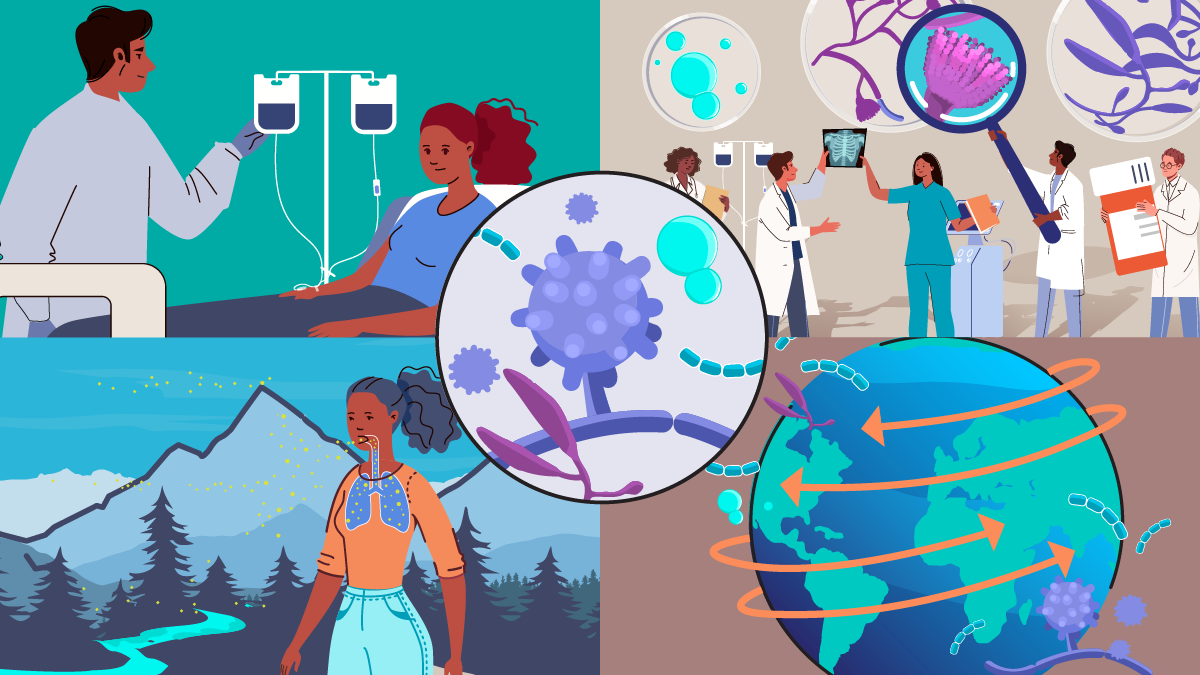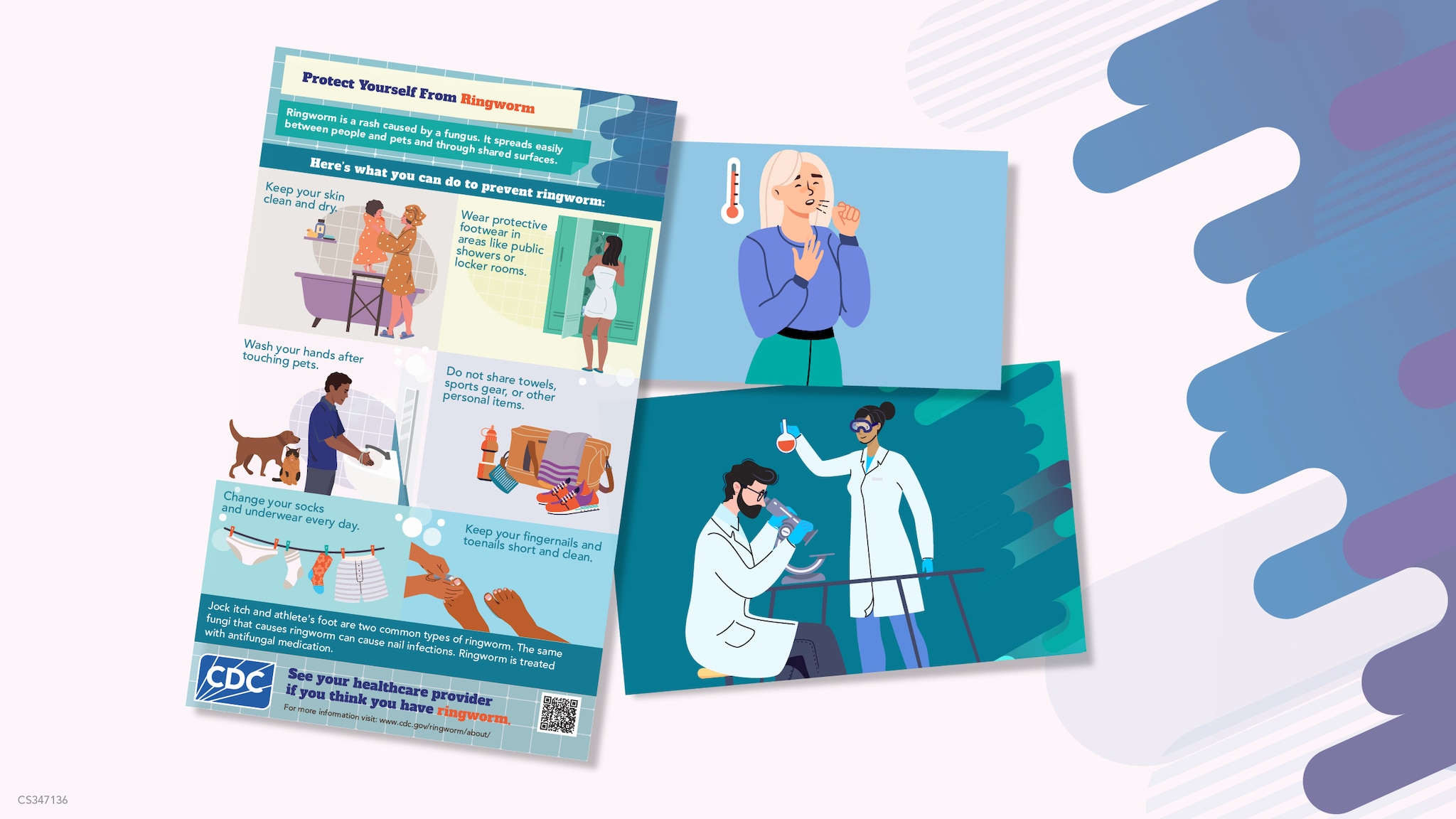Key points
- Pneumocystis pneumonia (PCP) is a serious lung infection that affects people with weakened immune systems.
- PCP is airborne, spreading person-to-person, and can cause symptoms, like fever, cough, and chest pain.
- Treatment for PCP must include prescription medication.
- PCP can cause death without treatment.

Overview
Pneumocystis pneumonia (PCP) is a rare, serious lung infection caused by the fungus Pneumocystis jirovecii. Most people with PCP have a weakened immune system due to a medical condition, like HIV, or from medication, like corticosteroids.

Symptoms
The symptoms of PCP can develop over several days or weeks and include:
- Fever
- Cough
- Difficulty breathing
- Chest pain
- Chills
- Fatigue (tiredness)
Risk factors
Most people who get PCP have weakened immune systems. Some diseases and conditions that increase risk of PCP include:
- HIV/AIDS (About 30% to 40% of people who get PCP have HIV/AIDS)
- Chronic lung diseases
- Cancer
- Inflammatory diseases or autoimmune diseases (for example, lupus or rheumatoid arthritis)
- Solid organ or stem cell transplant
The other people who get PCP are usually taking medicine (such as corticosteroids) that lowers the body’s ability to fight germs or sickness.
How it spreads
PCP spreads from person to person through the air. Some healthy adults can carry the Pneumocystis fungus in their lungs without having symptoms. They can spread it to other people, including those with weakened immune systems.
Prevention
There is no vaccine to prevent PCP. Medicine to prevent PCP are recommended for people living with HIV, stem cell transplant patients, and some solid organ transplant patients. Healthcare providers might also prescribe medicine to prevent PCP in other patients, such as people who are taking long-term, high-dose corticosteroids.
The medicine most commonly used to prevent PCP is called trimethoprim/sulfamethoxazole (TMP/SMX). Other medicines are available for people who cannot take TMP/SMX.
Testing
Healthcare providers test for PCP by taking a sample of mucus (sputum) from the patient's lungs. Sometimes, a small sample of lung tissue (a biopsy) is used to diagnose PCP or take a blood sample.
Samples are analyzed in clinical laboratories. One method that can be used is polymerase chain reaction (PCR) which detects PCP DNA. A blood test to detect β-D-glucan (a part of the cell wall of many different types of fungi) can also help diagnose PCP.
Treatment and recovery
PCP is treated with prescription medication. The most common treatment is trimethoprim/sulfamethoxazole (TMP/SMX), a medication also known as co-trimoxazole and by several different brand names, i.e. Bactrim, Septra, and Cotrim. This medicine is given by mouth or through a vein for 3 weeks.
TMP/SMX can cause side effects such as rash and fever. Other medications are available for patients who cannot take TMP/SMX.
Note: Most fungal diseases are treated with antifungal medications. Antibiotics typically are used to treat infections caused by bacteria. Unlike other fungal diseases PCP is treated with an antibiotic and antifungal medications do not work to treat it.
Research
There is no national surveillance for PCP in the United States. There were 10,590 estimated U.S. hospitalizations due to Pneumocystis pneumonia in 2017.
History of HIV and PCP
During the 1980s, clusters of PCP were one of the first signs of the HIV/AIDS epidemic emerging in the United States. It became one of the main AIDS-defining illnesses with an estimated three-in-four people living with HIV/AIDS developed PCP.
Since then, PCP in people living with HIV has decreased substantially due to antiretroviral therapy and treatment with TMP/SMX. In some developing countries that lack access to these treatments, PCP remains a common infection among people living with HIV.
More fungal disease resources
Communication and Educational Materials
Webinars, Podcasts, and Clinical Tools
- Harris JR, Balajee SA, Park BJ. Pneumocystis jirovecii pneumonia: current knowledge and outstanding public health issues. Curr Fung Infect Rep 2010;4:229-37.
- Kovacs JA, Hiemenz JW, Macher AM, et al. Pneumocystis carinii pneumonia: a comparison between patients with the acquired immunodeficiency syndrome and patients with other immunodeficiencies.
- Ann Intern Med 1984;100:663-71.Roux A, Canet E, Valade S, Gangneux-Robert F, Hamane S, Lafabrie A, et al. Pneumocystis jirovecii pneumonia in patients with or without AIDS, France.
- Emerg Infect Dis 2014;20:1490-7.Medrano FJ, Montes-Cano M, Conde M, de la Horra C, Respaldiza N, Gasch A, et al. Pneumocystis jirovecii in general population.
- Emerg Infect Dis 2005;11:245-50.Gold JAW, Jackson BR, Benedict K. Possible diagnostic delays and missed prevention opportunities in Pneumocystis pneumonia patients without HIV: analysis of commercial insurance claims data — United States, 2011–2015.
- Open Forum Infect Dis. 2020 Jun 29Karageorgopoulos DE, Qu JM, Korbila IP, Zhu YG, Vasileiou VA, Falagas ME. Accuracy of beta-D-glucan for the diagnosis of Pneumocystis jirovecii pneumonia: a meta-analysis.
- Clin Microbiol Infect 2013;19:39-49.Hay JW, Osmond DH, Jacobson MA. Projecting the medical costs of AIDS and ARC in the United States. J Acquir Immune Defic Syndr 1988;1:466-85.



